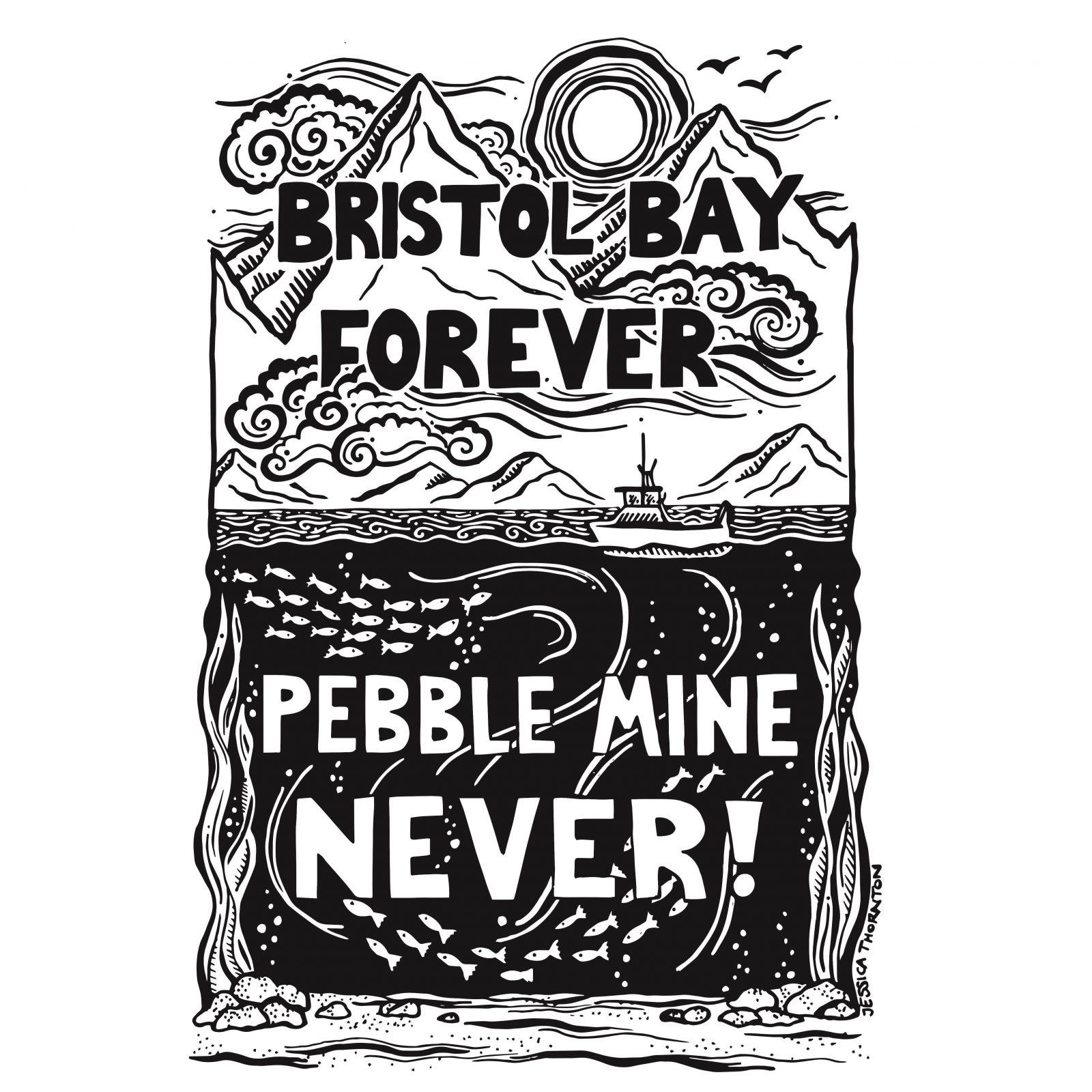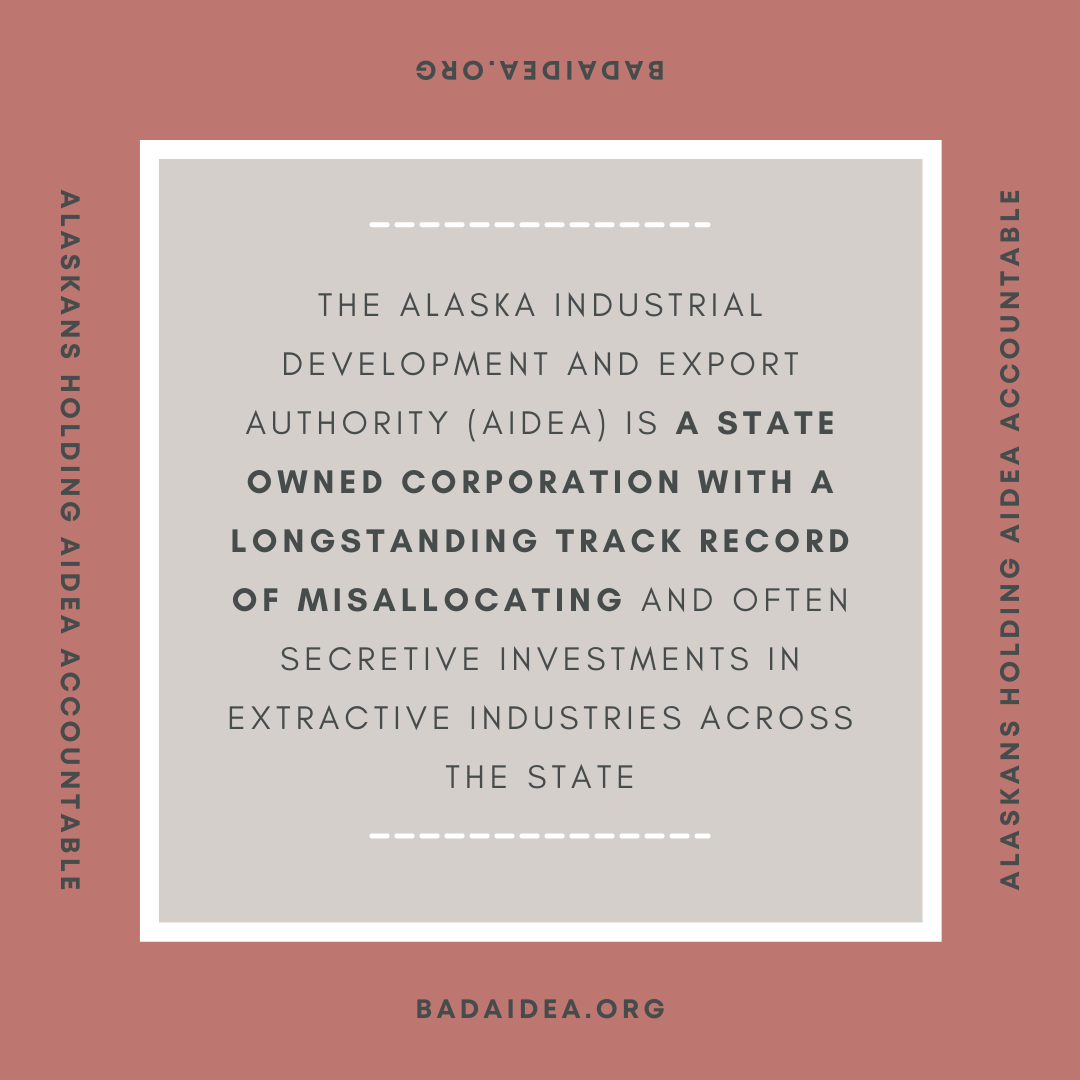
What’s going on in Juneau?
By Brian Litmans and Dawnell Smith

The Alaska legislature finishes its first session of the year in mid-May, and there’s a lot going on. Some of it sounds weedy, confusing, even like good news for climate. There’s more than meets the eye, though, so let’s take a look under the surface.
State seeks control over permitting industrial use of wetlands
Governor Dunleavy wants the Alaska legislature to spend big money to allow a state agency to take over Clean Water Act permitting from the U.S. Army Corps of Engineers. This means big trouble for places like Bristol Bay. This should worry Alaskans because of what it means for the health of waterways, fisheries, and the budget.
Here’s what Dunleavy’s trying to do. In January, he picked up the Parnell Administration’s playbook by requesting that the Alaska Legislature approve a budget allocation for the Department of Environmental Conservation to take over the Clean Water Act permitting program for wetlands and waters.
Parnell initiated an effort back in 2013, but that effort was rejected as too costly and challenging for the state to take on.
Perspective and power
There’s good reason that only three states (Michigan, New Jersey and Florida) have assumed wetlands permitting. The program is costly and challenging—and there is no extra funding from the federal government for states to run their own programs.
Why does Dunleavy want to increase the state budget by millions of dollars each year when the Army Corps has ably issued permits for decades?
First, Alaska is filled with wetlands. Over 40 percent of the state is wetlands, and over 60 percent of the nation’s wetlands are in Alaska. Because so many extractive industry projects involve filling wetlands, the state wants greater control of who approves those permits, with the goal of approving more of them with less rigor in the permitting process.
Putting permit decisions in the hands of a Pebble proponent
Giving control of the program to Alaska’s DEC would be a gift to industry, and the proposed Pebble mine provides a clear example. In November 2020, the Army Corps rejected Pebble’s application for a wetlands permit. It is the only major development permit the Army Corps has denied in Alaska.

If the state took over permitting, the Pebble application would be reviewed and decided by Alaska’s DEC—and, ready for it?—its current commissioner Jason Brune previously worked as a public affairs manager for Anglo American, at the time an equal partner with Northern Dynasty Minerals in the Pebble Limited Partnership.
The all too common refrain of the fox in charge of the hen house couldn’t be more on point. Given Brune’s close ties to industry, it is readily apparent what this takeover is all about.
Putting Outside industry interests before the health of Alaska
Second, the state wants to ensure that permit requirements are as accommodating as possible for industry. One permitting sticking point for industry is the type and amount of mitigation required. Under the Clean Water Act, mitigation is required to offset for the unavoidable adverse impacts from filling wetlands and waters—basically, destroying wetlands or their ecological function.
Mitigation can involve restoring or preserving wetlands, which comes at a cost that industry would rather not bear. With Alaska’s DEC in charge, DEC could find a variety of ways to limit or not require mitigation, paving the way for industry to get projects up and running while paying a pittance for on-the-ground impacts on fish, ecosystems and communities.
This is scary stuff
Third, when permits like these are issued by the federal government, a number of other laws and requirements are triggered, like the National Environmental Policy Act. This law requires federal agencies to take a hard look at all the impacts of a proposed project and consider a range of alternatives to that proposal. This analysis is conducted in environmental impact statements or assessments whenever there is a federal approval or when the project is on federal lands.
If Alaska’s DEC took over this permitting process, projects on state or Alaska Native lands could be approved without this type of substantive analysis and public review. Without this analysis and process, the public gets no chance to learn, understand, and comment on all of the consequences of the proposed project.
In addition, Alaska’s DEC would not be required to consult with tribes under the National Historic Preservation Act to assess how the project may impact cultural and archeological resources; nor would it need to conduct government-to-government consultation with tribes, nor make any subsistence determinations under the Alaska National Interest Lands Conservation Act.
On top of that, the state agency wouldn’t need to consult with the U.S. Fish and Wildlife Service or the National Marine Fisheries Service to assess how the project may impact threatened and endangered species under the Endangered Species Act.
And, like icing on industry’s cake, if anyone wanted to challenge a DEC-issued wetlands permit, they would need to go to state court, where they would be subject to the “loser pays” rule for attorney fees of the other party.
Dirty deeds done cheap
Despite Dunleavy’s push to takeover wetlands permitting, DEC has done no feasibility analysis to assess how it will create a program that will comply with the Clean Water Act or how much it will cost. Other states that have done due diligence have recognized that it’s too costly.
What we do know is that DEC would need to hire at least 30 to 40 staffers to run the program and it would cost millions every year.
The Army Corps is better situated and more accountable to review and issue permits. If the state took it over, it would lead to significant annual operating costs–including the cost of litigation should suits be brought over poorly analyzed permits–and irreparable damage to Alaska’s waters and wetlands and to the lives of those who rely on them.
Dunleavy wants to gets dirty deeds done cheap with Alaskans paying the price. It’s a bad deal for wetlands and waterways, and a bad deal for Alaskans.
Legislators resolve to pander to oil and gas
A house joint resolution that complains about the U.S. Department of the Interior undoing of an unlawful management plan for the western Artic is making its way through the legislature. It essentially asks Interior and the U.S. Bureau of Land Management to maximize areas available for leasing and drilling.
The resolution has no tangible requirements, and serves instead as political propaganda for legislators eager to attach themselves to the oil and gas industry while offering zero leadership on true clean energy solutions that create real on-the-ground energy security and stability in Alaska.
Meanwhile, a Green Bank Bill that’s built to fail
The idea of a green bank for Alaska makes a lot of sense and can make a real difference in diversifying Alaska’s economy—assuming of course that it would speed the transition to clean energy and the cessation of greenhouse gas pollution in a fair way that puts people and communities first.
Unfortunately, this bill—introduced and promoted by climate-denying interests—would put money into the hands of the Alaska Industrial Development and Export Authority, a state agency known for its closed-door meetings, appointed board members with industry ties, unethical decisions, and lack of public or legislative accountability.

The bill would give AIDEA broad authority to spend the so-called “green bank” money without accountability to communities and Alaskans, or any clear and specific understanding of what “green” means in terms of a true reduction in carbon pollution or energy stability and agency in Alaska communities.
In the past few years, AIDEA has manipulated Arctic Infrastructure Fund money to push for things like the proposed Ambler road and Arctic Refuge oil and gas lease acquisition without legislative accountability and despite strong opposition from people who would be directly impacted.
Jessica Girard, executive director of the Fairbanks Climate Action, explained why the bill as written will do great harm without achieving the kind of green economy that will benefit all Alaskans. As written when proposed, the green bank bill would give another pot of public funds to an untrustworthy agency that has proven itself accountable only to the Governor’s agenda and industry interests.
The AIDEA reform bill
All of this brings us to a bill that would make AIDEA accountable to the public, to public process, and to a deeper engagement with stakeholders. It would require legislative approval of the five public members of the board and its director who represent a variety of economic sectors, for example.
This reform bill would not fix all the problems of an agency founded on a lack of transparency and public involvement. But it would bring more perspectives and voices into decision-making, particularly from those impacted by the projects AIDEA aims to fund.


